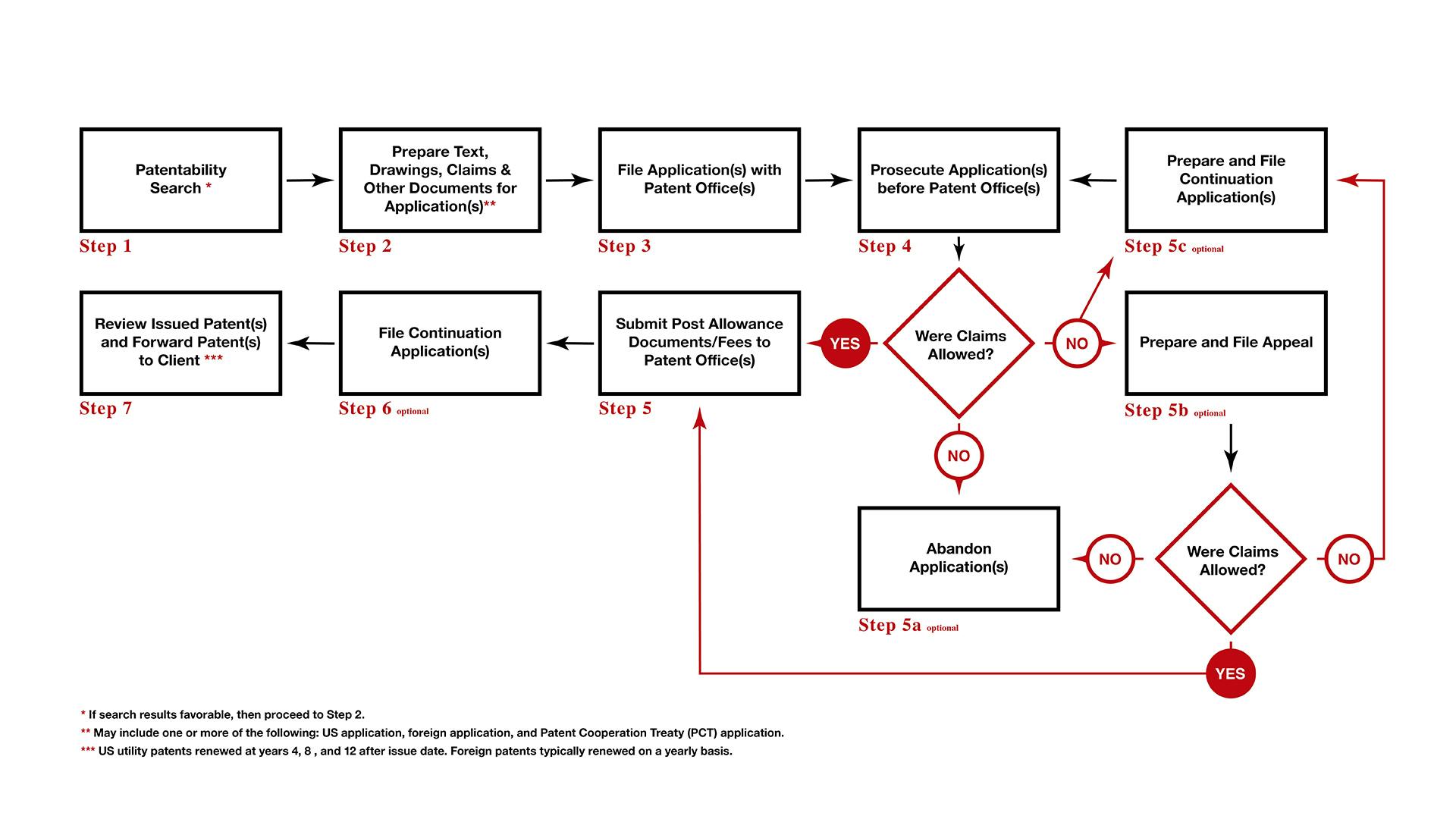What Is A Patent?
A patent is a property right granted to an inventor by a government that permits the owner of the right to exclude others from making, selling or using an invention for a period of time. An inventor must file an application with a patent office in order to secure patent rights. In the United States, the U.S. Patent and Trademark Office (USPTO) is responsible for granting a patent for an invention. The patent office will grant a patent if the invention is new, useful, or ornamental or distinct and non-obvious.
There are three types of U.S. patents: utility, design, and plant.
A utility patent is granted to protect a process, machine, manufacture, or composition of matter, or any new and useful improvement thereof. A utility patent is enforceable against others for a term of 20 years from the earliest filing or priority date of a patent application. A maintenance fee must be paid at each of years 4, 8, and 12 after the issue date of a patent, otherwise the patent will expire before the end of the 20-year term. It is sometimes possible to protect an invention under both a utility patent and a design patent.
A design patent is granted to protect a unique appearance or design of a manufactured object, such as the surface ornamentation or overall design of an object. A design patent is enforceable against others for a term of 15 years from the issue date of a design patent. No maintenance fees are required during the patent term. It is sometimes possible to protect an invention under both a design patent and a utility patent.
A plant patent is granted for a new and distinct plant variety, including hybrid, which reproduces by means other than from seeds. A plant patent is enforceable against others for a term of 20 years from the earliest filing or priority date of an application. A maintenance fee must be paid at each of years 4, 8, and 12 after the issue date of a plant patent, otherwise the patent will expire before the end of the 20-year term.
Is a United States patent enforceable in other countries?
No. Patent rights are country specific. A patent must be pursued in each country in which patent rights are required to prevent others from making, using, and selling an invention of the inventor.
The types of patentable inventions, the standards for patentability, the term of patent rights, and the maintenance requirements during the enforcement term may vary from those in the United States.
If patent rights are required in more than one country, then it is important to develop a filing and prosecution strategy that maximizes a successful outcome in each country and optimizes the patent rights granted.
What are the steps in a typical process for securing patent rights in the United States?
Should a patentability search (also referred to as a novelty search) be performed before preparing and filing a patent application?
A patent application prepared and filed without first performing a patentability search is much like driving with your eyes shut. Therefore, a patentability search performed by an experienced searcher is highly recommended before preparing and filing a patent application.
A patentability search will identify published patent applications and patents which may be citable by an examiner against the claims you might file in a patent application for you invention. The claims define the scope of the property rights to your invention. The search results will provide information so that you may evaluate whether the property rights you might claim are possible, and if so whether the rights might be broad or narrow.
The investment in a patent search offers several benefits. The search results will allow you to assess whether additional investments of time and money in the pursuit of patent rights are appropriate. The documents identified in the search results will improve the quality of the application filed for your invention by focusing on the improvements unique to your invention. The inventions described in the search results will allow you to develop and implement filing and prosecutions strategies that optimize prosecution of your patent application.
A patentability search is not an infringement search. An infringement search is conducted to determine whether making, using, or selling an invention would infringe the patent rights owned by another party. An infringement search is more comprehensive and significantly more expensive than a patentability search.

